As a home inspector in the Central Maryland and Pennsylvania region, I come across a lot of different homes and I see a lot of ways homes can improve energy efficiency. Inspecting everything from new construction homes to both original-condition and renovated older homes from multiple generations of home-building technologies gives us home inspectors a unique view into home energy efficiency (or lack thereof). We get to see construction and building and insulation materials that often span a hundred years or more worth of building science and technology! Here in the Central Maryland and Pennsylvania area, we are still in the summer season and our homes are and have been working hard to keep us comfortable and cool. But, within the next month or so, we will once again see the seasons change as Fall comes to bear the cooler temperatures as a precursor to what Old Man Winter has in store for us later! As homeowners who want to protect our investments and spend our energy dollars efficiently, taking a little bit of time now to do some checks and some home maintenance can go a long way toward meeting those goals. Read further to find some easy ways you can improve the energy efficiency of your home and let your hard-earned dollars stretch further for you when cooling and/or heating your home.

Weatherstripping, Caulks, and Sealants
Doors and windows are a huge way for us to let our indoor, conditioned air out of our homes, and subsequently, allow it to be replaced with unconditioned, outdoor air. When we open our doors and windows, this, of course, allows the exchange of indoor air with outdoor air and vice versa. Certain times of year here in Maryland and Pennsylvania, we enjoy and want this fresh air exchange like during the mild weeks in Spring and mid-Fall. But, for the majority of the year, we fight off letting the bitter cold of winter into our comfortable heated homes or letting the hot and humid summer air into our air-conditioned homes. Since doors and windows are made to open and close, the moving parts of them create joints and seams that usually do not seal well against each other by themselves. In fact, because of expansion and contraction that occurs naturally with changing temperatures and humidity levels, these seams and joints are designed and built to have a small gap to accommodate this phenomena. Weatherstripping, caulking, and sealant materials are used to seal these gaps while still allowing for the expansion and contraction of materials in the doors and windows. Weatherstripping comes in a variety of materials and sizes and is installed along the edges between the joints and seams of the moving parts of doors and windows. Caulks and sealants come in a variety of types, colors, and purposes for different applications. Over time, the materials wear out from use and they can dry out/deteriorate, etc. and need periodically replaced to maintain functionality. If you see visible light shining into your home between door and window seams and joints, it is definitely a sign that you need better weatherstripping. Examine the caulking and sealants along the exterior and interior edges of your window areas for signs of cracking, peeling, and deterioration. Replacing and/or adding weatherstripping, caulks, and sealants will help seal the gaps and seams and keep warm air from travelling to the cold air.
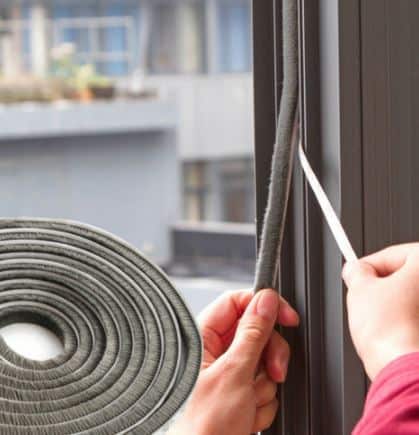
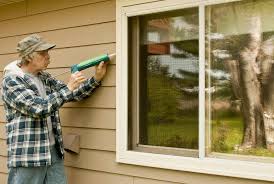
Attic Hatch
People often overlook our attic access hatches when it comes to energy-efficiency. I would estimate that only 1 in 10 houses I inspect have a properly insulated attic entrance hatch. Usually, our attics are not conditioned space within our homes – in other words, they are designed to freely exchange air with the outdoors via ventilation. This is why attics are crazy hot in the summer, and usually pretty cold in the winter. We use insulation materials in our attic spaces to slow down the natural progression of warm air (energy) moving to cold air. We go through great efforts to insulate our attic floors/ceilings – so why then do we forget or ignore insulating the attic hatch? By doing so, we are effectively leaving a large area open for quicker and easier energy loss as the energy from the warm air moves its way to the cold air. Without insulation to slow it down, our hatches become highways for energy loss! Adding a blanket or tent of insulation above our hatch can go a long way toward slowing down this overlooked area of energy loss. Furthermore, if we take it one step further and add some weatherstripping along the edges of the hatch to seal it better, we save even more energy dollars!
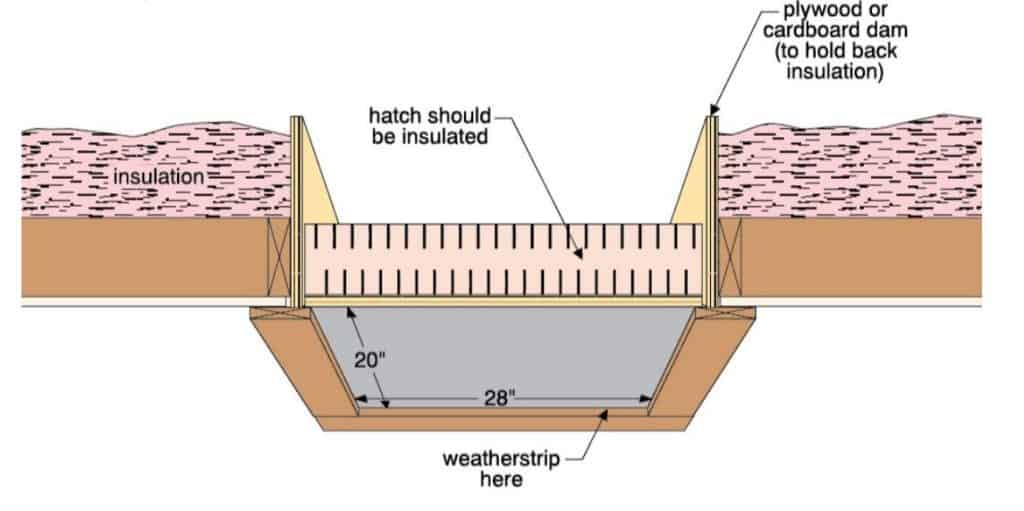
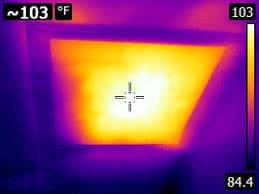
Attached Garage? Shut the door(s)!
Even though we may think that our garages are not part of the living areas of our houses, if they are attached to the same structure, they can be a huge area for energy loss! In the summer time, just leaving the garage open for a short time can allow the hot and humid air from the outdoors to enter into the garage space. In the winter time, of course, it lets the cold air into the garage space instead. When we do this, we have now trapped a large area of air that has a significant temperature differential to the air inside of our conditioned living space. Because of thermodynamics once again, hot air will naturally flow to the colder air, resulting in energy loss. Although our garages in modern construction are often insulated, this alone often times is not enough to deter the effects of thermodynamics. The best and easiest way to control energy loss to/from the garage? You got it, SHUT THE DOORS! Open garage doors for entry and exit and keep them closed as much as possible to help alleviate energy loss via the garage area.
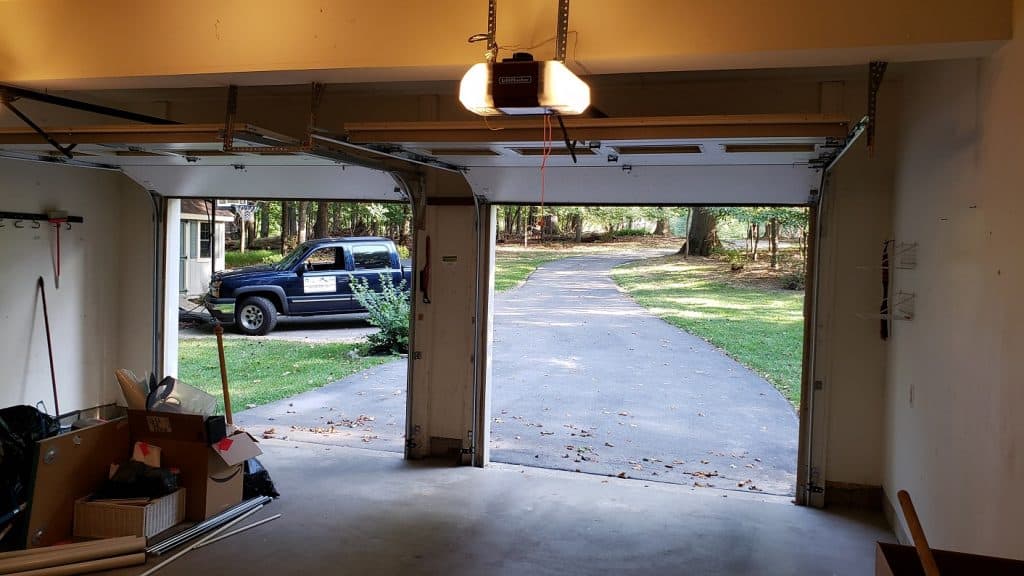
Windows – Shades/Blinds and Latches
Along with maintaining the weatherstripping in our windows, we can also help to control energy movement in other ways at our windows, too. During home inspections, I try to check as many windows as possible in the home to operate them and check their general condition. Very seldom do I run across a home in which the occupants have every window latched and/or locked appropriately. Not only does this present a security hazard, it also presents a way for our windows to promote energy loss. Windows are usually designed so that when the lock/latch is properly connected and operated fully, it also forces the window sash(s) to form a tighter seal against the jamb and/or sill. So, be sure to always latch/lock your windows properly when closing them!
Another way you can help control energy flow in and out of your windows is with your window coverings. Coverings such as blinds, shades, and curtains are not only decorative, they are also functional ways to control energy loss (or addition) to your home through your windows. To help retard energy loss in the summer, keep your windows covered to prevent the sunlight from heating the interior of the room and thus making your air-conditioning system work that much harder to remove that extra heat you are adding. In the winter, do the exact opposite – keep your window coverings open to allow the sunlight to heat the interior of the room and thereby help your heating system by not having to work as hard to keep you warm.
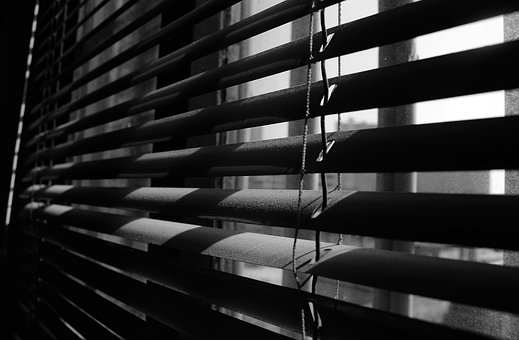
Insulation and Ventilation
I know you have heard a lot over the years as a homeowner about the benefits of adding insulation to your attics. Insulation acts as a retardant to slow down the natural progression of heat energy moving to the cold. In winter, the heat energy inside our homes will try to move through our ceilings and walls and floors toward the colder air inside our unconditioned attics and crawlspaces and basements and outside our homes. In summer, the exact opposite occurs – the heat energy in the outside of our conditioned space tries to move toward the cooler air inside our homes. Insulation is a good way to slow this natural progression down, and thus help us to keep our energy costs down due to less energy loss. Adding insulation to our unconditioned spaces such as attics, crawlspaces, and basements is often a good idea. Current recommendations for attic space insulation for our Maryland and Pennsylvania homes is to insulate to a value of R-49. Commonly used materials such as fiberglass, mineral wool, and cellulose have about R-3 per inch. Consult with an Insulation Professional to determine the cost-effectiveness of adding more insulation to your home so you can determine how long it will take you to recover your investment in insulation materials in the form of energy savings. If you add insulation yourself, do your research to know what type(s) of insulation to add, and be careful you do not block off ventilation areas within your unconditioned attic/crawlspace/basement or you can possibly do more harm than good!
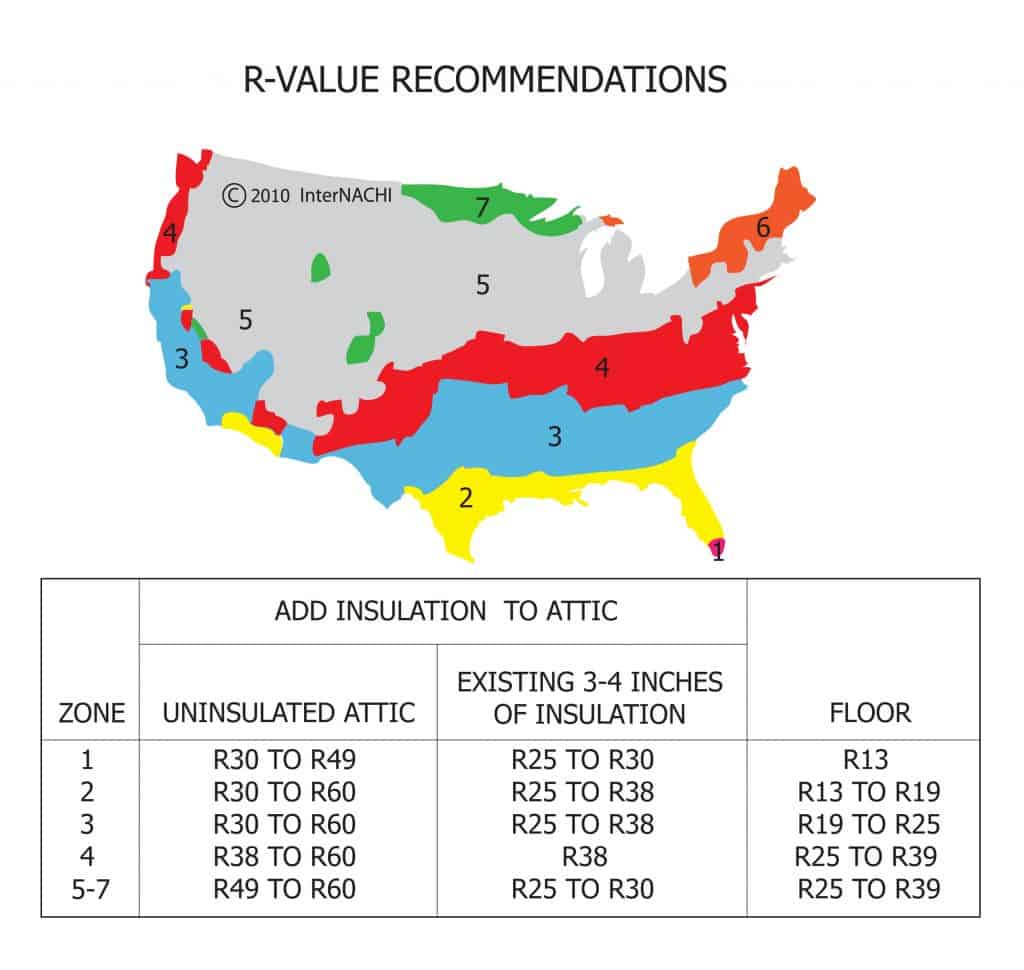
Speaking of ventilation, this is an often overlooked area that goes hand-in-hand with insulation. Sufficient ventilation can be just as important as sufficient insulation in our attic/crawlspace/basement areas because it helps to control the flow of moisture (humidity) via the air. Over the years, building science has improved and new and better ways to ventilate have become available. You may have noticed that a lot of modern homes (and many retrofitted older homes) now have a small protrusion or cap that runs along the roof ridges – these are known as ridge vents. Most often, these are also accompanied by perforated panels that get installed along the soffit areas under the roof eaves and overhangs. Together, the soffit and ridge vents have been installed to allow air to flow in and out of the attic. Exterior air will flow into the attic via the soffit vents and then air inside the attic will exit via the ridge vents. Exchanging air with the outside allows the unconditioned space to also move moisture in the air out of the attic space as well. The same principal applies to unconditioned crawlspaces and basements. With respect to ventilation, it is important to have enough vents to allow the free exchange of exterior air in and out of the unconditioned space and just as important to make sure the vents are open to allow the air to flow properly. If you add insulation yourself, BE SURE NOT TO BLOCK YOUR VENTS! If you do, you may get an unwanted problem with moisture in the space due to condensation, and this, in turn, can lead to bigger problems such as mold.
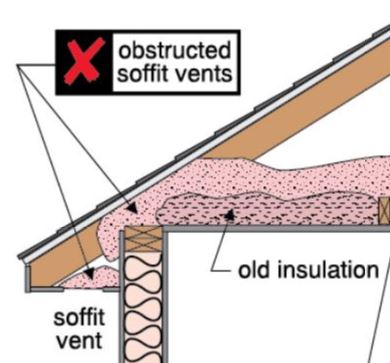
HVAC tune-up
Last but not least, be sure to have your Heating Ventilation and Air-Conditioning (HVAC) system(s) serviced at least annually. HVAC units, including furnaces, heat pumps, boilers, and air-conditioners, all have moving parts and are mechanical in nature. Just like your automobile needs periodic maintenance to run efficiently and reliably, your home’s HVAC system needs similar maintenance and tune-ups for it to be able to run efficiently and reliably, too. You work hard for your money, so I am sure you want the most of every energy dollar to go toward actually heating or cooling your home. Along with having an HVAC Professional maintain and tune-up your system on a regular basis, one of the most overlooked ways you can help your HVAC system run its best is by changing your air filters regularly. On average, at least every other system I inspect has a dirty air filter. Dirty air filters make your HVAC system work harder than it should have to in order to heat or cool your home. A dirty air filter is like you trying to breathe through a towel – you have to work harder just to breathe. Maintaining your system will let your HVAC system put the most of every energy dollar toward your comfort!
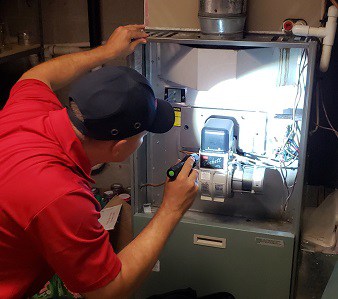
Summary
In conclusion, I hope this article has been helpful to you in identifying several ways that we can improve energy efficiency in our homes. Even if you have the most modern, up-to-date home with the latest and greatest building technologies, there are always ways to save energy. Some of the energy savings in this article are simple things that cost no money to do such as closing garages, latching windows tightly, and opening and closing window coverings during different times of the year. Although other energy savings methods will involve some investment on your part, you can often recover these costs fairly quickly in the form of energy savings and eventually save even more money than you spent to improve it. Not only will you save money by making your home more energy-efficient, you will also be doing your part to conserve energy and be more “green” by lessening your environmental footprint.
Call Absolute Assurance at 443-939-HOME (4663) for all of your Home Inspection needs including full and partial home inspections for buyers/sellers/investors, rental inspections, annual home inspections, mold inspection and testing, radon testing, and water testing!
